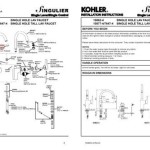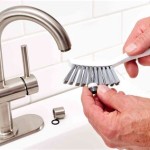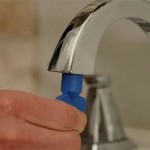Removing a Faucet from a Bathroom Sink: A Comprehensive Guide
Replacing or repairing a bathroom sink faucet often requires removing the existing fixture. While this task may seem daunting, it's a relatively straightforward process with the right tools and knowledge. This article provides a step-by-step guide to safely and effectively remove a faucet from your bathroom sink.
1. Gather the Necessary Tools
Before beginning the removal process, ensure you have the following tools on hand:
- Adjustable wrench
- Channel-lock pliers
- Screwdriver (Phillips head and flathead)
- Basin wrench
- Plumber's tape (Teflon tape)
- Bucket or container
- Towels
- Safety glasses
A basin wrench is a specialized tool designed to access and tighten nuts located beneath the sink, which are often difficult to reach with a regular wrench. Having these tools readily available will streamline the removal process.
2. Turn Off the Water Supply
Safety is paramount when working with plumbing. Before attempting to remove the faucet, shut off the water supply to the sink. This is typically achieved by turning off the valves located beneath the sink or on the wall near the faucet. Once the water is off, run the faucet to ensure it's completely drained.
3. Disconnect the Faucet Supply Lines
Once the water is turned off, disconnect the supply lines that feed the faucet. The supply lines are usually made of flexible braided metal or plastic and connect to the faucet's inlets. Use an adjustable wrench or channel-lock pliers to loosen the nuts securing the supply lines to the faucet. Be careful not to overtighten or damage the lines. Once the nuts are loose, gently pull the supply lines away from the faucet.
4. Remove the Faucet Handle and Base Plate
The next step involves removing the faucet handle and base plate. Most faucets have a screw or cap concealing the handle attachment mechanism. Use a screwdriver to remove this screw or cap, then carefully pull the handle off the faucet. The base plate, which covers the faucet's mounting screws, can typically be removed by unscrewing it with a screwdriver. It's important to note that the specific method for removing the handle and base plate can vary depending on the faucet model.
5. Loosen and Remove the Mounting Nuts
With the handle and base plate removed, you can access the mounting nuts that secure the faucet to the sink. These nuts are usually located beneath the sink and may be difficult to reach. Using a basin wrench, carefully loosen and remove these nuts. If the nuts are particularly stubborn, consider using a penetrating oil to help loosen them. Once the mounting nuts are removed, gently lift the faucet upwards to detach it from the sink.
6. Inspect and Clean
Once the faucet is removed, take the opportunity to inspect the faucet and the sink for any damage or buildup. This is also a good time to clean the faucet components and the area under the sink. Removing any debris or corrosion will help ensure a smooth and leak-free installation of the new faucet.

Diy How To Replace A Bathroom Sink Faucet Remove Install

How To Replace A Bathroom Faucet Home Repair Tutor

How To Remove And Install A Bathroom Faucet

How To Remove And Install A Bathroom Faucet

How To Replace A Bathroom Faucet Home Repair Tutor

Replacing A Bathroom Faucet Fine Homebuilding

How To Replace A Bathroom Faucet Tinged Blue

How To Replace A Bathroom Faucet Home Repair Tutor

How To Remove And Install A Bathroom Faucet

Diy How To Replace A Bathroom Sink Faucet Remove Install
Related Posts







